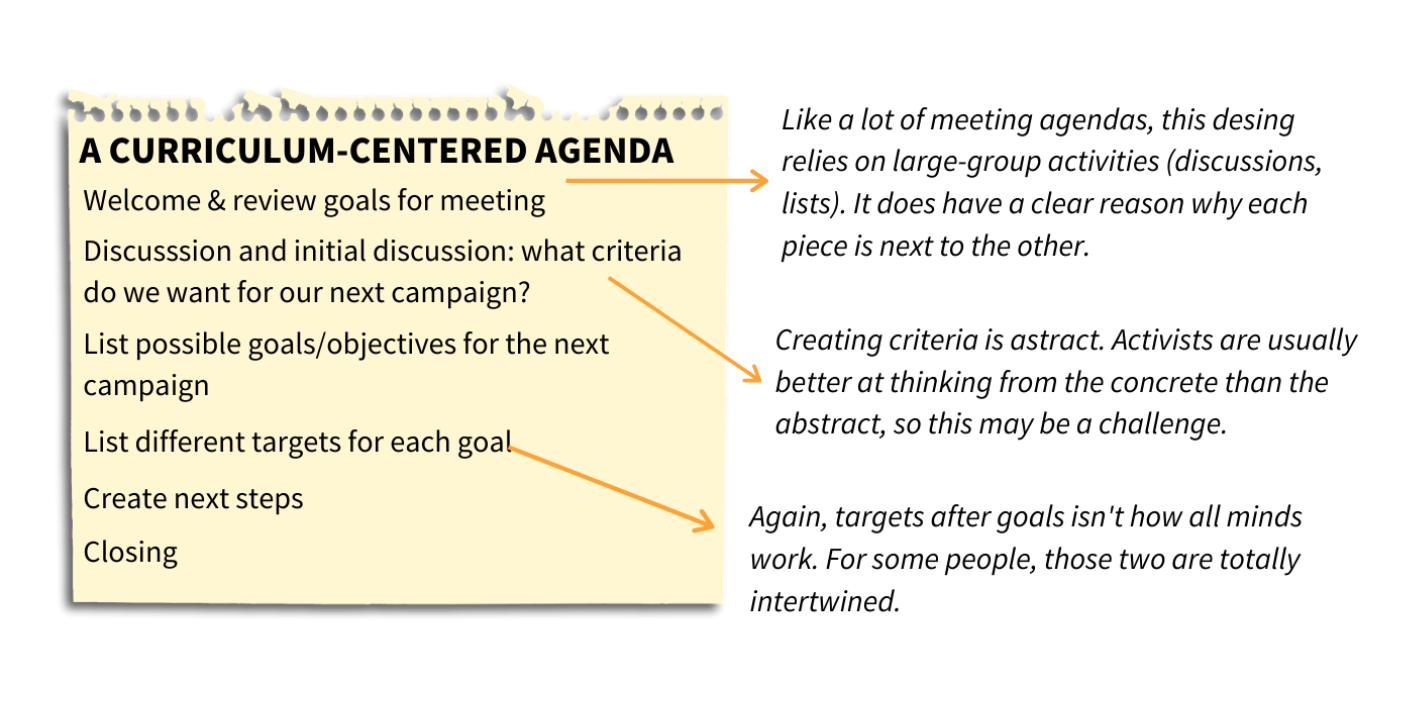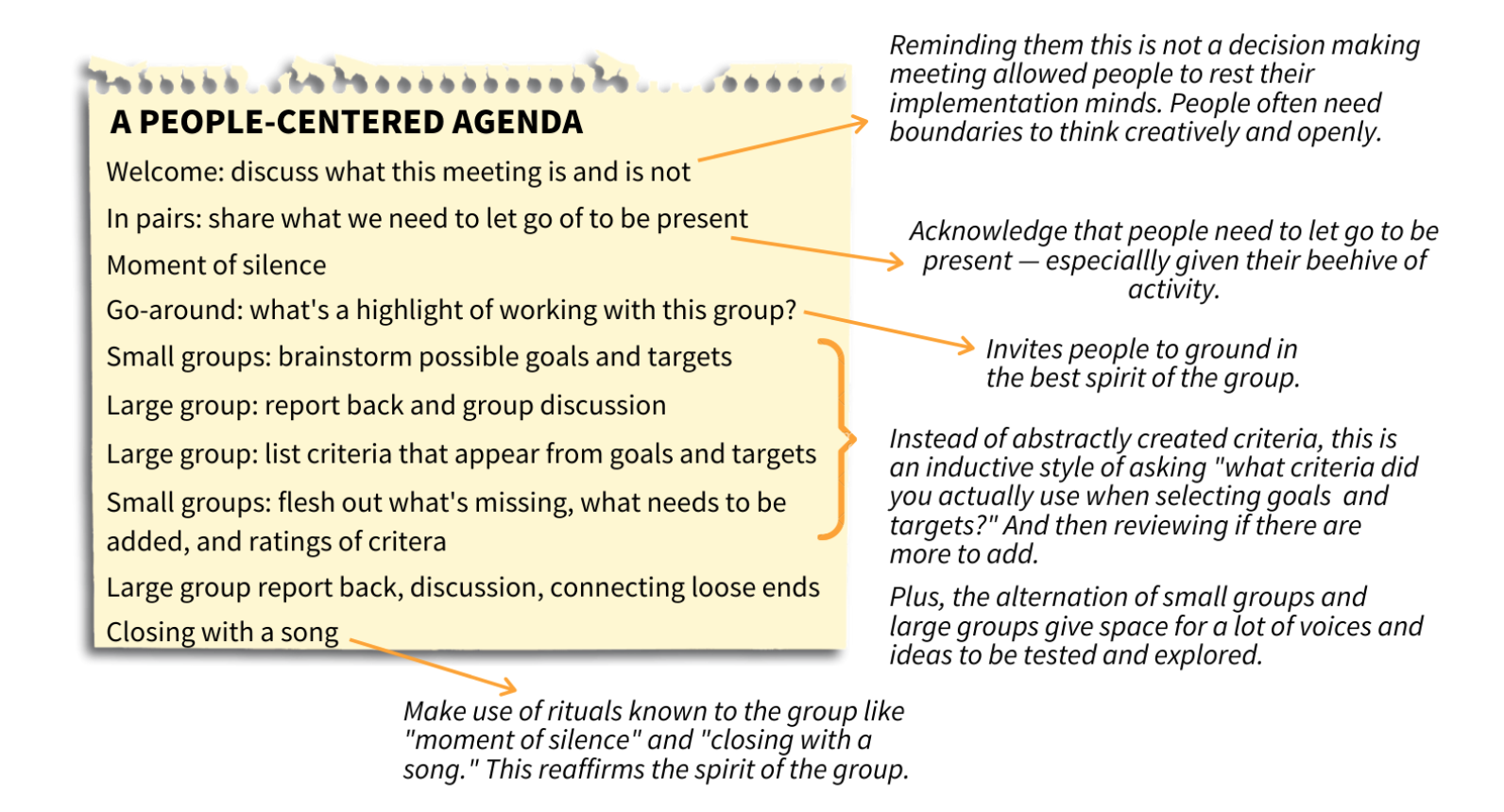People-Centered versus Curriculum-Centered Design
Topic
Language
Workshops
Type
When putting together a workshop or meeting, there is much to consider. One consideration is the curriculum: does the content of each activity build on the previous in logical ways? Another is the people and their knowledge, situation, and preparation: does the design respond to the psychological needs of the participants in order to access the content?
These are different design approaches and sometimes compete. The field of “curriculum developers” trend towards highly curriculum–centered, building from one core competency to another. However, these designs fail if they do not account for people’s psychology.
THE APPROACHES IN ACTION: AN EXAMPLE
A group of environmentalists thought it was possible they might be close to winning their campaign. There was a flurry of activity and growing numbers at their events –plus indications their target (opponent) was ready to crack. So to think ahead, they called a session to think about the next campaign and what new campaign goals they would select.
Therefore they held a 2–hour session. It wasn’t a decision–making meeting, but instead a chance for a free brainstorm to think about the next campaign. So what agenda should they use?
THE CURRICULUM–CENTERED APPROACH
The curriculum–centered approach starts with the list of things needing to be done: Step 1) Decide on criteria for the next campaign, Step 2) Brainstorm possible goals/objectives, Step 3) From those goals, decide which targets they should select.
That agenda might look something like this:

THE PEOPLE–CENTERED APPROACH
The people–centered approach comes at a task from a different position. Instead, it thinks about the questions: How do people think and work? How do they make decisions? What would get in this group’s way? What sets them into the right tone for this session? The people–centered approach, by contrast, was modeled by one of their activist facilitators:

This design worked amazingly well –getting people into deep reflection, all the while increasing people’s motivation to work with the group. And while it did require more time on the set–up (15 minutes until people started listing possible goals and targets), it saved time on the whole because the quality of the thinking was so much fresher and less weighted than if they had run into the agenda with all the pressures of the next big action weighing them down.
